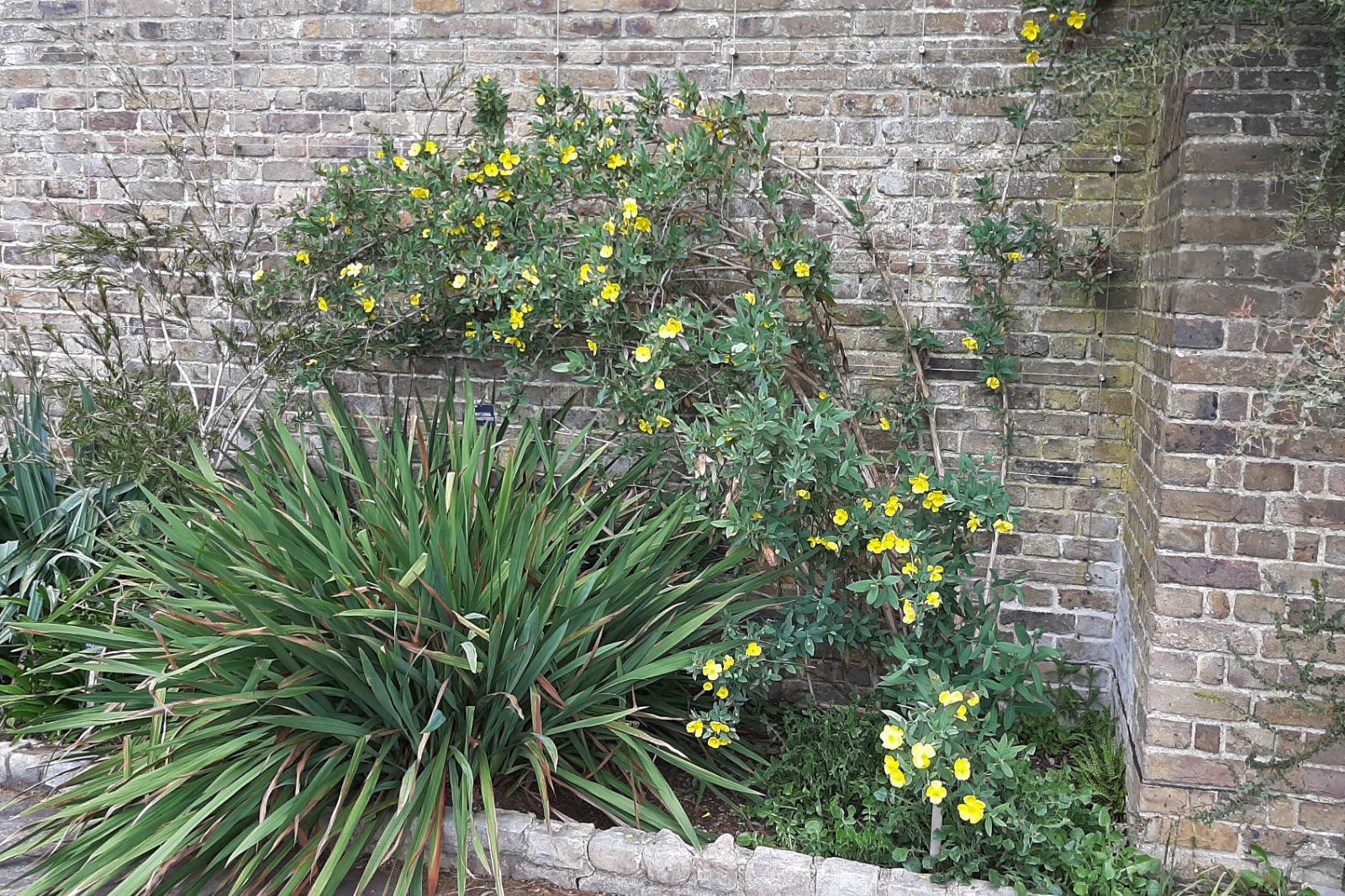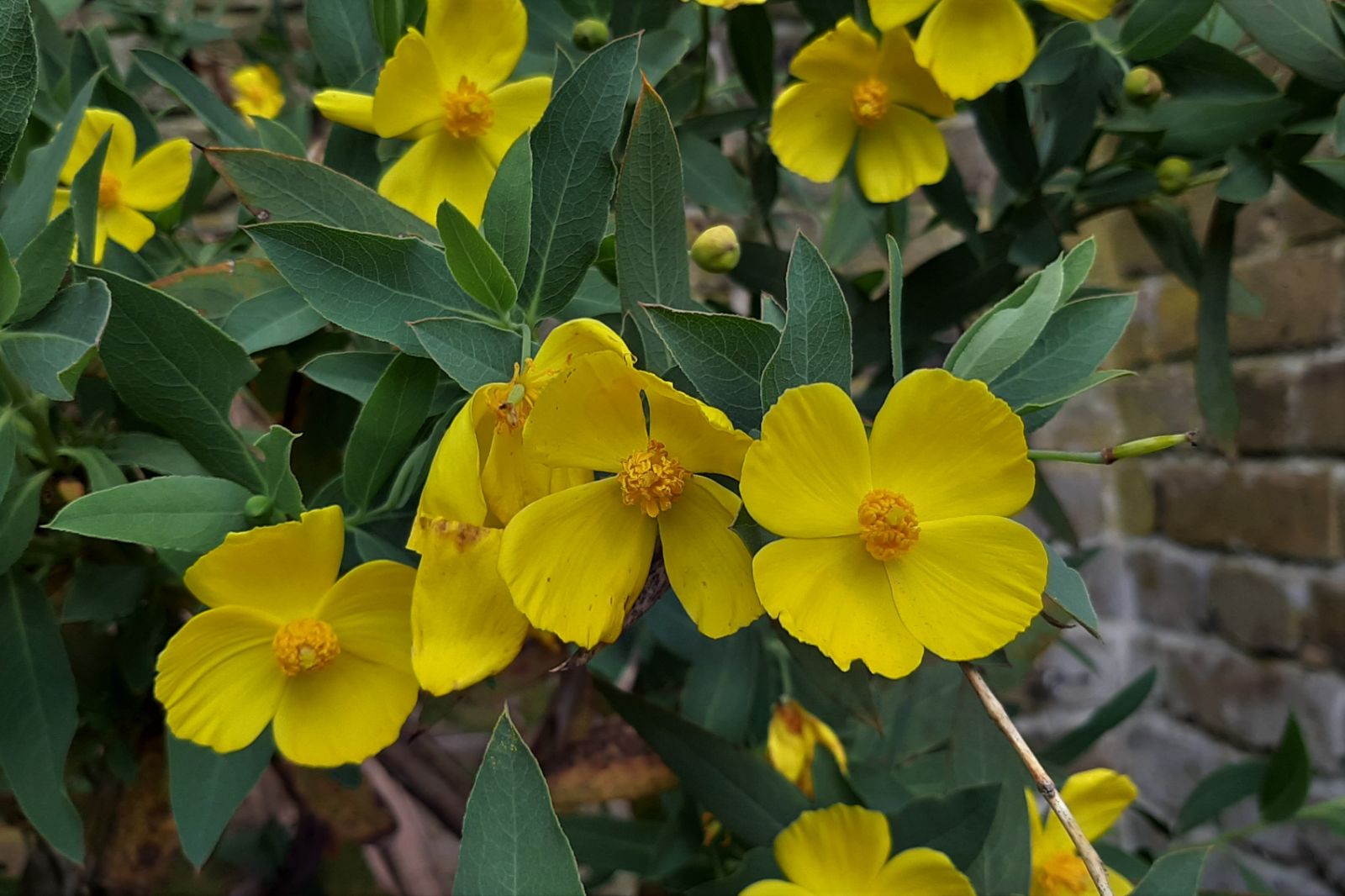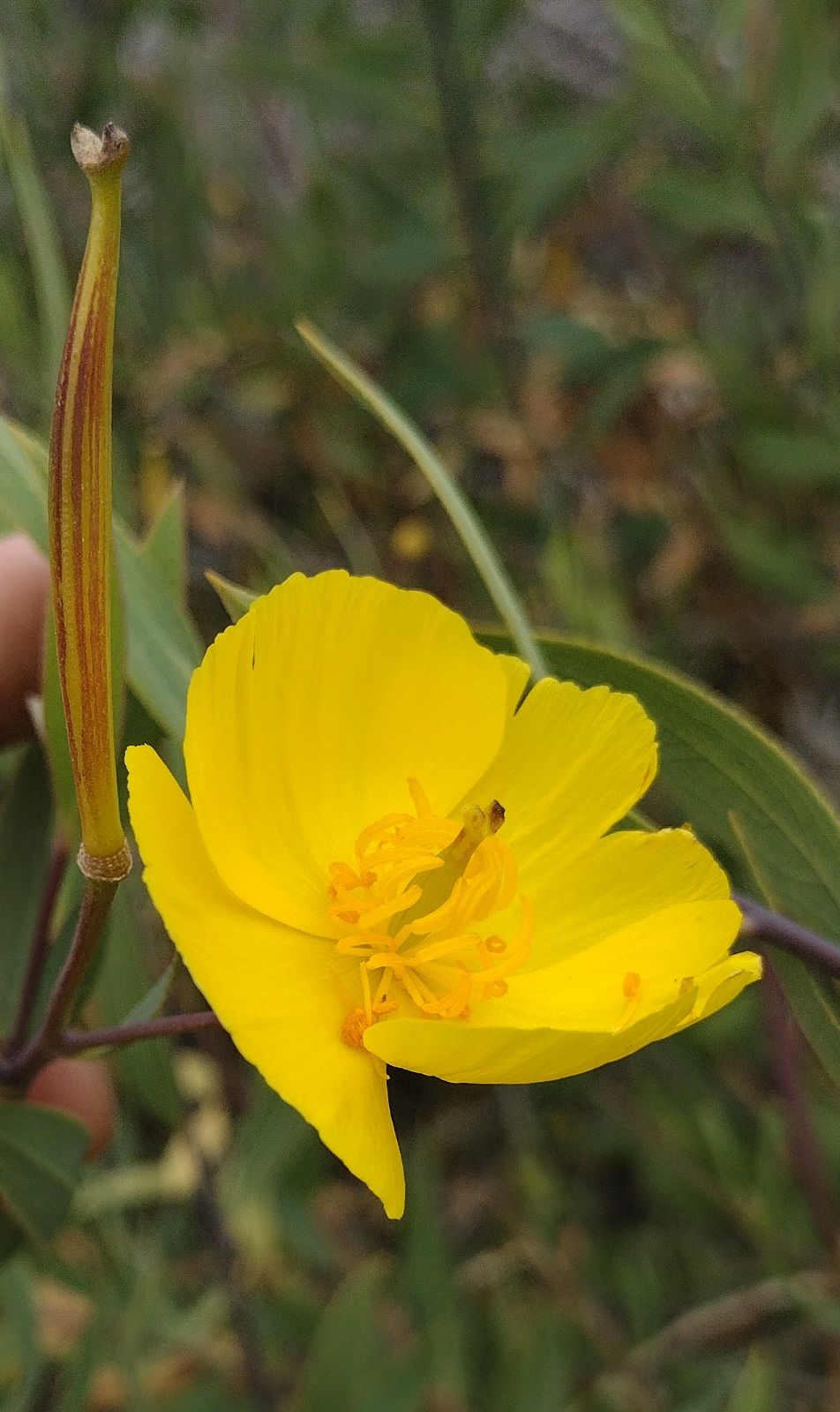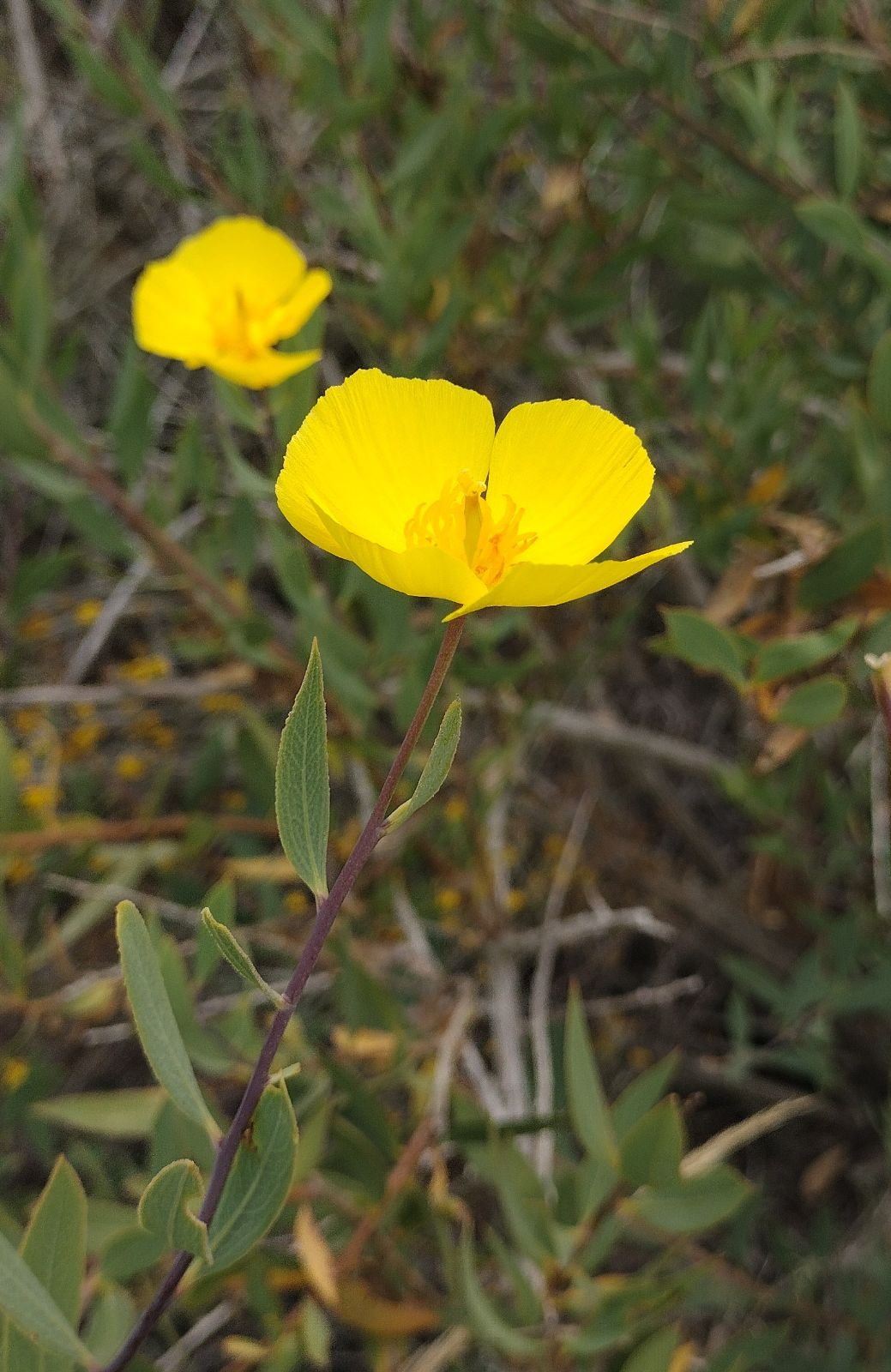Dendromecon rigida
Credits
Article from Bean's Trees and Shrubs Hardy in the British Isles
Recommended citation
'Dendromecon rigida' from the website Trees and Shrubs Online (treesandshrubsonline.
Genus
A shrub up to 10 ft high in the wild; the branchlets half-woody, slender, glabrous, glaucous. Leaves thickish, ovate or narrow lanceolate, pointed, 1 to 3 in. long, glaucous, nearly or quite stalkless. Flowers poppy-like, bright yellow, 2 to 3 in. in diameter, borne singly on stalks 11⁄2 to 3 in. long, fragrant. Petals four; calyx of two sepals; stamens numerous. Bot. Mag., t. 5134.
Native of California, where it was discovered by David Douglas on dry rocky hills. First introduced by W. Lobb about 1854, this beautiful plant has from time to time disappeared and been reintroduced. It is undoubtedly tender, but thrives at Kew at the foot of a sunny wall until a winter like that of 1908–9 kills it. It needs the sunniest position available, and the soil should be of a loamy character, lightened by the addition of sand, and especially mortar rubble, well drained. Propagated by cuttings made of well-ripened, firm summer shoots; the cuttings should consist of three joints, and be placed singly in small ‘thumb’ pots in moderate heat in very sandy soil. A plant in the garden of Capt. Riall at Old Conna Hill, near Bray, in Ireland, covered a wall to the height of 12 ft. Its main stem was 6 in. thick, and the plant was always more or less in bloom. Against a hot-house wall it reached 16 ft with Major A. Pam in Hertfordshire.




